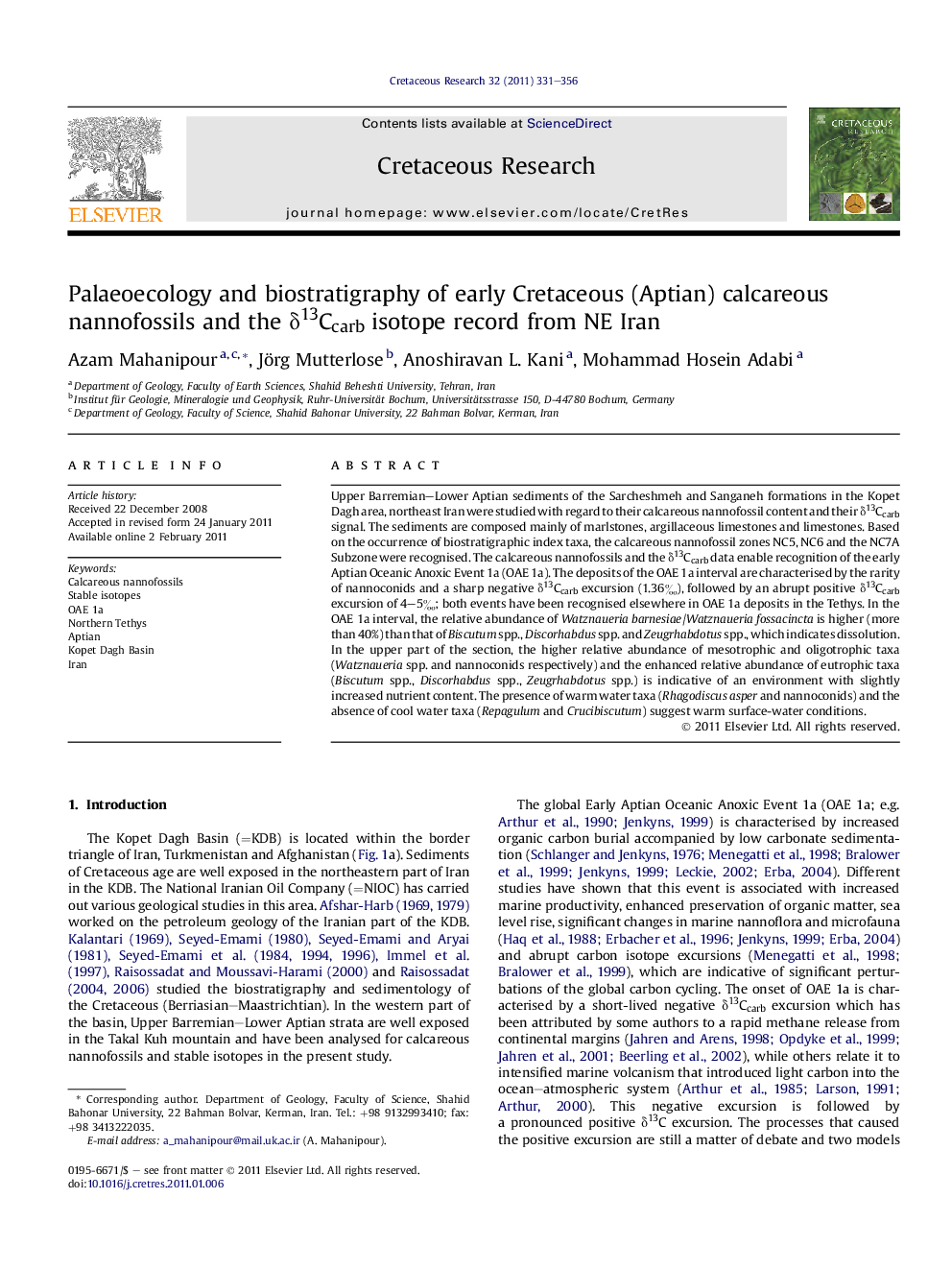| Article ID | Journal | Published Year | Pages | File Type |
|---|---|---|---|---|
| 4747472 | Cretaceous Research | 2011 | 26 Pages |
Abstract
Upper Barremian-Lower Aptian sediments of the Sarcheshmeh and Sanganeh formations in the Kopet Dagh area, northeast Iran were studied with regard to their calcareous nannofossil content and their δ13Ccarb signal. The sediments are composed mainly of marlstones, argillaceous limestones and limestones. Based on the occurrence of biostratigraphic index taxa, the calcareous nannofossil zones NC5, NC6 and the NC7A Subzone were recognised. The calcareous nannofossils and the δ13Ccarb data enable recognition of the early Aptian Oceanic Anoxic Event 1a (OAE 1a). The deposits of the OAE 1a interval are characterised by the rarity of nannoconids and a sharp negative δ13Ccarb excursion (1.36â°), followed by an abrupt positive δ13Ccarb excursion of 4-5â°; both events have been recognised elsewhere in OAE 1a deposits in the Tethys. In the OAE 1a interval, the relative abundance of Watznaueria barnesiae/Watznaueria fossacincta is higher (more than 40%) than that of Biscutum spp., Discorhabdus spp. and Zeugrhabdotus spp., which indicates dissolution. In the upper part of the section, the higher relative abundance of mesotrophic and oligotrophic taxa (Watznaueria spp. and nannoconids respectively) and the enhanced relative abundance of eutrophic taxa (Biscutum spp., Discorhabdus spp., Zeugrhabdotus spp.) is indicative of an environment with slightly increased nutrient content. The presence of warm water taxa (Rhagodiscus asper and nannoconids) and the absence of cool water taxa (Repagulum and Crucibiscutum) suggest warm surface-water conditions.
Related Topics
Physical Sciences and Engineering
Earth and Planetary Sciences
Palaeontology
Authors
Azam Mahanipour, Jörg Mutterlose, Anoshiravan L. Kani, Mohammad Hosein Adabi,
